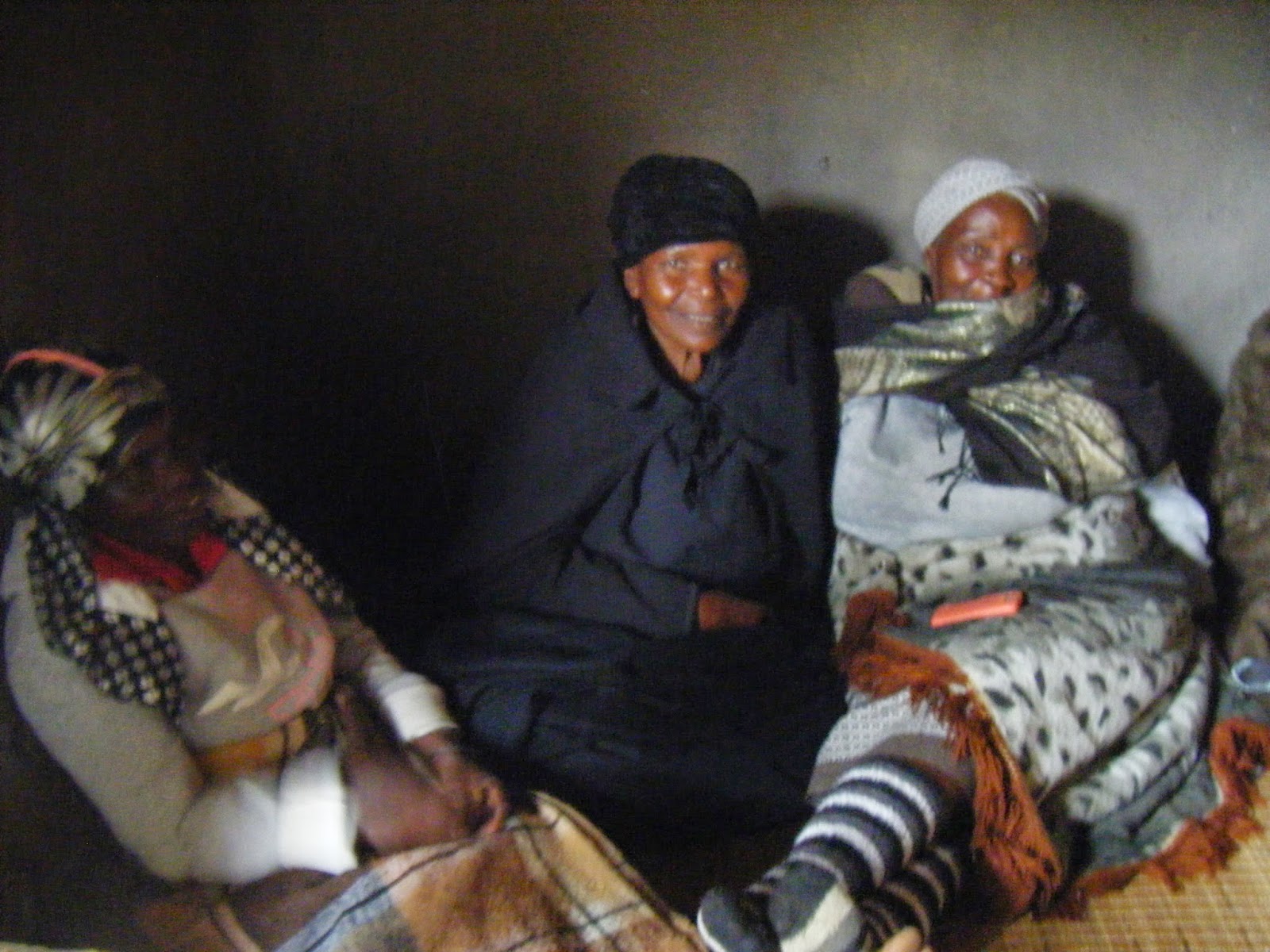WARNING: Graphic animal slaughter footage below! You’ve been warned…
I was the official wedding photographer at my friend’s
lobola ceremony a few months ago, and it was SO FUN! Normally I despise large, traditional
activities for the negative attention they bring to me. (Marry me, give me your dog, give me your
clothes, etc….) But at this wedding, I
knew both the bride and grooms’ families, so there was no awkward conversation
or marriage proposals. Being the
photographer was also nice, because the bride went around explaining to
everyone that I was developing the photos for them, so that let me mix in and
out of every age and gender cluster without offending.
Marriages in Swaziland are a union of two clans, and so the
families get to know each other at large, festive celebrations spread out over
years. The ceremonies surrounding them
take so long that I have yet to see a single wedding from the bride-snatching
“teka” ritual to the finish.
The part of the ceremony I’ll describe below is the first day
of the “lobola” (bride price) portion of the ceremony that I photographed. This is the second major weekend of
festivities following the bride-snatching teka ritual, but could happen years
after the teka. For instance, my friend
who is getting married was teka-d by her husband when she was 18. They have raised four children together, two
of whom are already adults themselves. His
family has only just recently collected enough cows to pay lobola, so that in
part explains the typical long delay between teka and lobola ceremonies.
Anyways, the lobola is a two-day ceremony. On Saturday, the two families reside, cook,
and eat on two separate homesteads. A
goat is slaughtered at each and cooked for everyone.
I stay on my friend’s homestead, and she makes a beautiful
blushing bride.
Everyone cooks, sleeps, and dances around. The girls and men show off their traditional
dancing. Everyone sings and claps while
one individual is given the floor to show off their moves. Nothing is funnier to them than when I try
the traditional high-kicks characteristic of Swazi dancing.
I lay dozing on a grass mat when I overhear the old men
talking about me and wondering if I would like to be teka-d. One hypothesizes that I would be offended,
while others refute this and say that I am a Swazi now. I startle them by laughing and responding in
SiSwati that I don’t want to have a Swazi traditional wedding, but that I can
respect the custom.
Around 2 in the afternoon, the groom’s family assembles and
sits on one side of the rondhuvel. The
bride’s family elders also file in and sit facing the groom’s family. It is an intimate space. I sit with the female elders on the groom’s
side. The bride and groom also sit with
their families.
The bride’s family begins by the elders introducing
themselves individually. The grooms
family choruses a response to each greeting; “Sizesazi, sizesazi,
sizesazi.” I don’t understand as it is in
Zulu and I’m a bit rusty on my translation.
Thankfully, one of the elders catches my confusion and gives her
responses in Swati for my benefit.
“Sitesati, sitesati, sitesati.”
It means “We came, we didn’t know.”
(Later in the week, I ask Peace Corp’s language and culture trainer why
they say this and why it’s in Zulu, and he doesn’t know why- just knows that
this is the way things are done).
Then the delicate negotiations begin! It is a fantastic exercise in Swazi
compromise and conflict resolution.
Voices are kept soft and low as elders take turns speaking, eye contact
is avoided, and everyone sits still until unanimous agreement can be
reached. Mostly male elders speak, but
females are also listened to if they voice an opinion. If an offer is deemed not serious, the other
family guffaws gently and acts mildly offended.
The groom’s family opens with the offer of 5 cows, but there is much to
discuss. About 40 minutes in, the
bride’s family leaves to conference in private. They return with a counter-offer, and the
groom’s family agrees.
The final offer is 7 cows plus 1,000 cash. The groom’s family has only brought 800 with
them, though, so Scruff-T is offered as collateral should they fail to pay the
remaining 200. She sits like a good girl
between my legs during the entire lobola negotiations. At several points she even snorts at the
correct moments, which caused the families to chuckle warily at how perceptive
she was.
Then the groom’s family veils the bride, who is crying. They drape the female elders of the
bride’s family with blankets and shawls.
They have accepted her into their family and the negotiations are
complete.
After that, everyone files outside and stands outside of the
crawl. Several young men go inside the
crawl. One has a spear and stalks the
two cows that are to be slaughtered.
Perhaps sensing their impending doom, the normally docile cattle run
back and forth skittishly as the young man walks behind them with his spear.
He strikes a large black cow just behind the front leg,
striking the artery. The cow is in a
panic and somehow manages to jump the fence.
The crowd jeers and men quickly go restrain it with a rope. It soon lays down and dies.
The second cow to be killed is brown. He strikes this one more cleanly, and it
stands patiently until it bleeds out.
The crowd erupts into cheers as it finally falls to its knees.
Quickly, knives and buckets are brought out and men and
women expertly beginning skinning and butchering the cows.
There’s a lot of laughter. The cows will be eaten tomorrow. For now, it’s just a party until the wee
hours of the morning.


















No comments:
Post a Comment